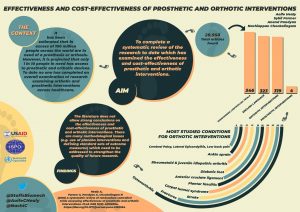One of our classic papers looked at the influence of practitioners and their skills in prescribing foot orthosis which are commonly prescribed and used in treating numerous lower limb problems.
Over the years several studies have reported positive effects and most clinical practitioners would confirm those findings. However, the exact mechanisms in which these orthoses work are not fully understood.
Our results suggest that the type and amount of effects observed is greatly influenced by the practitioners. From a scientific perspective, this indicates that great caution should be taken when studying and reporting the effects of custom foot orthoses (CFO). Had only one practitioner been used for studying CFO effects on kinematics, altogether different conclusions could have been drawn based on a single pair of CFO.
We recommend that future research on foot orthoses should focus on their long-term effect through longitudinal studies. Nevertheless, based on the reported data, it seems improbable that two different devices could yield the exact same results.
Most CFO will induce some systematic changes during gait. Furthermore, this study demonstrated that inter-practitioner variability is a major factor in orthotic intervention in treating a single patient and for a specific pathology. Based on the findings, it is strongly recommended to use caution when drawing general conclusions from research studies using CFO as it has been showed that the practitioner himself or herself will have a great influence on the treatment outcome. In addition, comparing studies on CFO where different practitioners were involved should be done with great caution as the conclusion could vastly differ.
Reference:
Chevalier, T.L. and Chockalingam, N., 2012. Effects of foot orthoses: how important is the practitioner?. Gait & posture, 35(3), pp.383-388.
https://www.sciencedirect.com/science/article/pii/S0966636211007600?via%3Dihub


